About
22 December 2022
An Uncertain World
How a quest to understand nature created a world-renowned nanophotonics expert
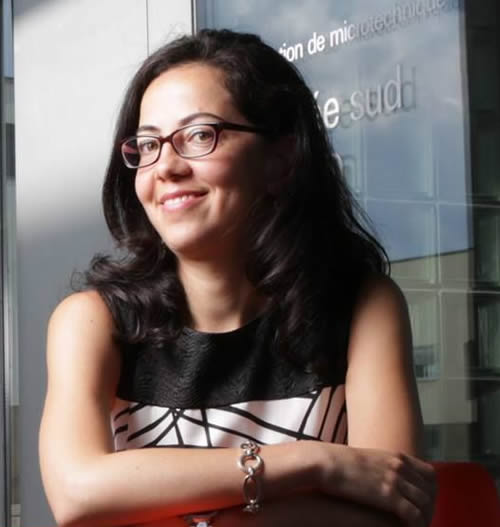
Hatice Altug, EPFL, Lausanne, Switzerland (2014)
Growing up in Karamanli, Southwest Turkey, Hatice Altug found nature a mystery and the world a challenge. Every year she watched weather play havoc with the livelihood of her rural farming community. At nine years old, Altug was profoundly impacted by this struggle with unpredictability. “I could see the disappointment on the farmers’ faces. Not because they didn't work hard but because they couldn’t control the environment. I wondered, 'why don’t they move on to growing other things after three times of failure?’”
Like most families in her community, the Altugs tended crops and coped with these frustrations. “As with any harvest, sometimes weather meant our crops did not produce a yield or turned out the wrong color, and we could not sell for the highest price. Everyone in the village put their efforts into growing beautiful produce that bloomed in the early part of the season. Then sometimes the rain came at the wrong time. Sometimes it was too hot, or there was a frost, and the yield would suddenly drop. I asked, ‘is this the best thing to grow in this climate?’ The people in the village believed this was how things were done, and it bothered me. I observed that the right instruments and tools were necessary to get the best result; otherwise, all the hard work was for nothing, ruined by things outside our control. This is why I turned to machines – to make systems I could design, predict and control.”
Fortunately for Altug, her small farming village was an open society where her curious mind blossomed with encouragement from her parents. “It was a great place to grow up. Women drove tractors and took the lead as much as men. My mum and dad were primary school teachers. They were also my teachers and were stricter with me, often punishing me more than other kids so as not to show any favoritism. They drilled into me that education was a number one priority in life.”
Fortunately for Altug, her small farming village was an open society where her curious mind blossomed with encouragement from her parents. “It was a great place to grow up. Women drove tractors and took the lead as much as men."
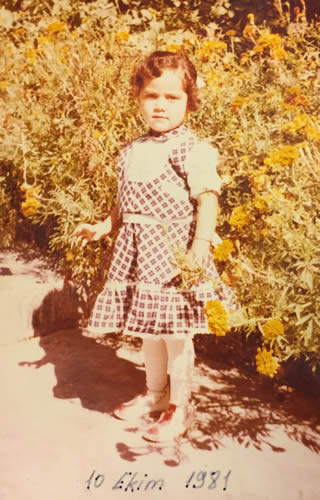
A young Hatice Altug, Karamanli, Southwest Turkey (1981)
To give their inquisitive daughter the best possible education, the Altugs retired from teaching and farming and moved to Antalya, a big city on the Mediterranean coast of Turkey. She excelled in science classes at her new middle school. "I had a great physics teacher who encouraged the scientist in me. In those days, the teachers used chalk and this teacher would draw stars on the arm of our blazers when we did well. With the number of stars I had notched up, I looked like an admiral! One lesson I distinctly remember is drawing rays to describe how a lens functions. Most of my classmates simply drew the lines, but I wanted to go further. When my teacher asked what we could do with the converging rays from a lens, I remember thinking about all the energy focused on a single concentrated dot. He helped me go beyond the class and question what was going on outside.”
Altug took her curiosity and made the world into her lab. “In my spare time, I began to conduct my own little experiments, setting fire to paper with magnifying glasses and mirrors to understand the fundamentals of sunlight and energy.” She would stand on the edge of her apartment’s balcony and wonder how gravity would affect things she dropped over. "I wanted to test stuff and get the feeling of gravitational waves first-hand. I began dropping objects to see how they fell and landed. Some flew, some went straight, and others bounced. At this point, I knew that I had to go into physics if I wanted to really understand nature."
In 1997, she enrolled in Bilkent University on a full scholarship in physics, choosing her passion over prestige. “In the Turkish higher education system, we have a nationwide university entrance exam. A high mark on this exam meant I’d get into a top university and I could choose a popular subject like electrical engineering or medicine. I knew I’d score well and be matched to such top-ranking subjects. But I chose physics even though it had a lower ranking because physics excited me the most. I couldn’t wait to start!”
Altug arrived at Bilkent University outside of Ankara, Turkey, eager to dive into her studies, but quickly realized her college experience had other challenges. “No one would talk to me. I had zero social interactions. The department admitted around ten or so students per year. I was the only girl in the freshman year and there were none in the year above me. There was one in the third year and another in the fourth, so the entire department had just three girls studying physics. I didn’t even see them! I dreaded breaks, a time supposedly for socializing. I had to chat with the receptionist just to have a conversation or call my mum on a payphone.”
Summertime was even lonelier, as other students were able to visit family or travel for internships, but Altug had to stay put. "Most of the campus was empty. Because physics was one of the few subjects that required summer classes, I didn't go home over the summer except for maybe a week or two. Staying occupied was imperative. It was like a ghost town since the university was situated on a remote hill outside Ankara.” As she searched for a break in the solitude, she discovered a solution—and her passion. “I found a place to lose myself, somewhere that became my escape: the lab. This was how I got into research.”
"I found a place to lose myself, somewhere that became my escape: the lab. This was how I got into research."
The laboratory in question, run by Professor Ekmel Özbay, was equipped with advanced optical equipment and a cleanroom. “I could not believe what this magical chamber was. Dr. Özbay had returned from the US (Stanford University) shortly after I joined Bilkent, and came to run the lab. He was an Optica member (or OSA as it was called in those days) and had won the Adolph Lomb medal. I had no idea what this meant, but I was totally fascinated! I told him I was available and ready to volunteer to do any kind of research.”
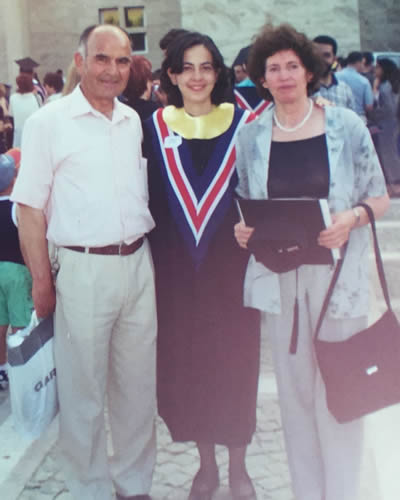
With proud parents: Hatice Altug, graduating from Billkent University, Turkey (2000)
The researchers in the lab welcomed Altug with open arms, treating her as an academic equal and giving her a window into the possibilities in optics. “I was like a kid in a candy shop, and I didn’t even feel the loneliness outside. The Ph.D. students who worked there belonged to a much older cohort, but I got on really well with them. In my second year, I was working on a research project with one of them. We stayed late every night to get the best signal-to-noise ratio, often leaving when it was dark. I built systems and learned everything hands-on. They wrote a paper and put me as the co-author. I didn't even know what that meant, but I was happy to be involved. I loved the scientific exploration and research!”
In her third year, Altug went to the Netherlands and tried studying different areas of physics, but she always came back to optics. Optics seemed to be what she had been looking for since her childhood: a key to making efficient systems. “I loved lasers and the exact nature of optics and photonics. I knew I could make useful applications with light.”
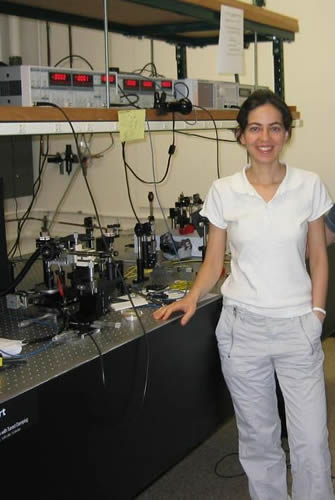
Hatice Altug in her lab, Stanford University, USA (2005).
Altug decided to pursue a Ph.D. in Applied Physics at Stanford. “There were no online applications and automated checklists that ensured you had everything in place in those days. Everything had to be done by paper.” Altug left nothing to chance. “I invested a lot of money getting all the correct postage and tracking. I would wake up in the middle of the night wondering if I had forgotten to put something in the envelope for my application. When I gave it to the DHL guy I asked him multiple times, 'It will make it to the US, right?’ I must have phoned the admissions secretary dozens of times, asking if it had arrived. A few months later I got a letter and remember seeing the tree of Stanford on the envelope. To read the word 'accepted' was amazing. I couldn’t believe it. I felt like I’d conquered the world.”
Stanford gave Altug new opportunities and exposed her to different methods of controlling light. “I came across nanophotonics, sculpting light at nanoscale to manipulate light-matter interactions in unprecedented ways and remember thinking, ‘how incredibly fascinating.’ I spent hours making a nanophotonic laser chip in the cleanroom, and the moment I saw the light coming out of it in the lab, that was incredible. It was like I had invented the wheel!”
"I loved lasers and the exact nature of optics and photonics. I knew could make useful applications with light."
Unlike her undergraduate experience, in the optics community, Altug was no longer the only woman studying physics. “There were two women who inspired me the most. They are true pioneers of nanophotonics: my supervisor, Jelena Vučković and [Optica president-elect] Michal Lipson. They were my role models, for sure. I was amazed at how they mastered the fundamentals and applications of nanophotonic systems.”
Altug was first introduced to Lipson at CLEO. “CLEO was a major event, and I saw Michal deliver a talk. I particularly loved how passionately she communicated her excitement for science and innovation.” For Michal Lipson, the professional admiration was mutual. “I was immediately in awe of Hatice’s work the first time I attended one of her presentations. She fiercely addressed both high-impact fundamental questions as well as technical challenges that seemed unsurmountable. She represents an amazing model of achievement for scientists across the globe,” Lipson said.
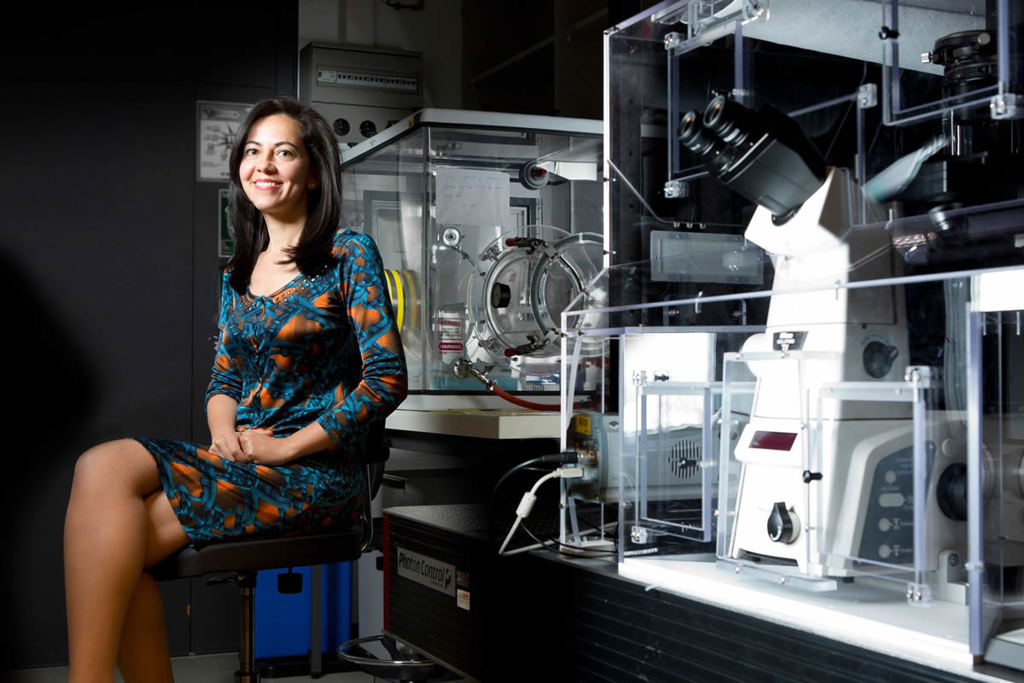
Hatice Altug, inside her lab (Bionanophotonics Systems Laboratory), EPFL, Lausanne. Credit: Alain Herzo, (2020)
Altug received her Ph.D. in 2007 and then completed a Postdoctoral Fellowship at the Center for Engineering in Medicine at the Harvard Medical School. From 2007 to 2013, she was first an assistant professor and later an associate professor of Electrical and Computer Engineering at Boston University. Altug’s accolades include the Inventors’ Challenge competition of Silicon Valley (2005), the U.S. Office of Naval Research Young Investigator Award (2010), the U.S. National Science Foundation CAREER Award (2010), and she was named one of Popular Science Magazine’s "Brilliant 10." 2011 was a big year for Altug. She won the IEEE Photonics Society Young Investigator Award, and President Obama presented her with the Presidential Early Career Award for Scientists and Engineers (PECASE) – the highest honor bestowed by the United States government on outstanding scientists and engineers in their early careers. In 2012, Altug received the same award as her first optics and photonics professor Ekmel Özbay – the Adolph Lomb medal. Today, Altug is an Optica Fellow, a full professor in the Bioengineering Department of Ecole Polytechnique Federale de Lausanne (EPFL), Switzerland, and director of the EPFL Doctoral School of Photonics.
Altug’s passion for tackling challenges with optics has seen her career progress to extraordinary heights. Her work has opened up ground-breaking possibilities for manipulating light at the nanoscale, dramatically improving our capabilities to rapidly detect viruses like Ebola and other disease-related proteins. She can’t control the weather, like her younger self may have hoped, but her research in nanophotonics has let her harness light to improve people’s lives.
"I spent hours making a nanophotonic laser chip in the cleanroom, and the moment I saw the light coming out of it in the lab, that was incredible. It was like I had invented the wheel!"
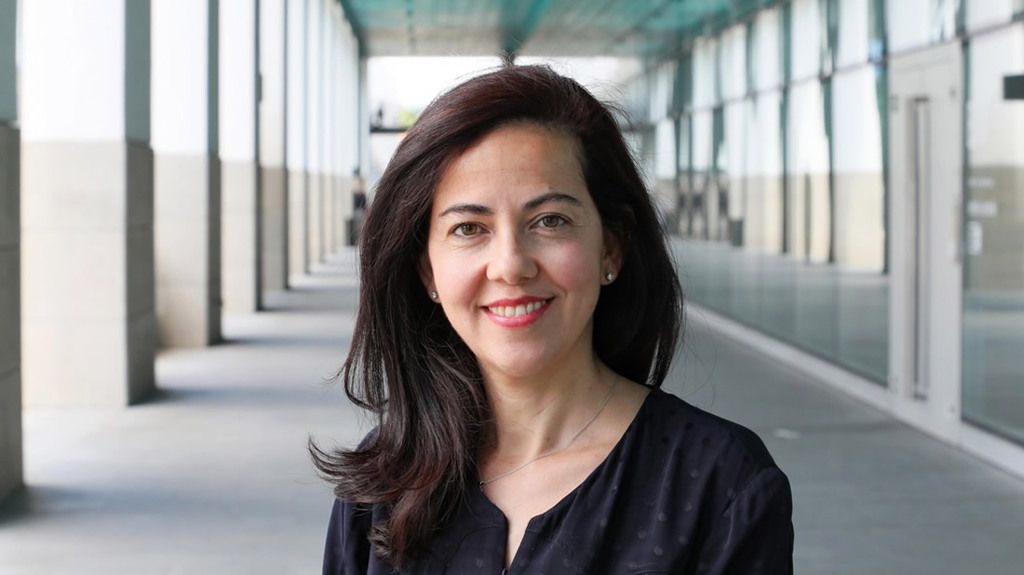
Hatice Altug, at EPFL, Lausanne, Switzerland, Alain Herzog (2019)
The Optica Community unites a diverse, global population of students, scientists, engineers and professionals. We invite everyone in our community to forge the connections vital to solving societal challenges through light science and technology.
Media Contact
